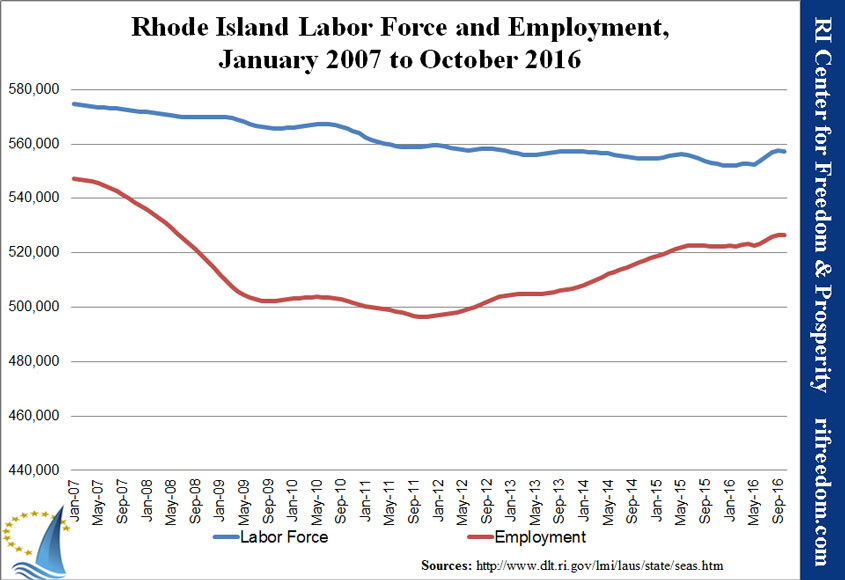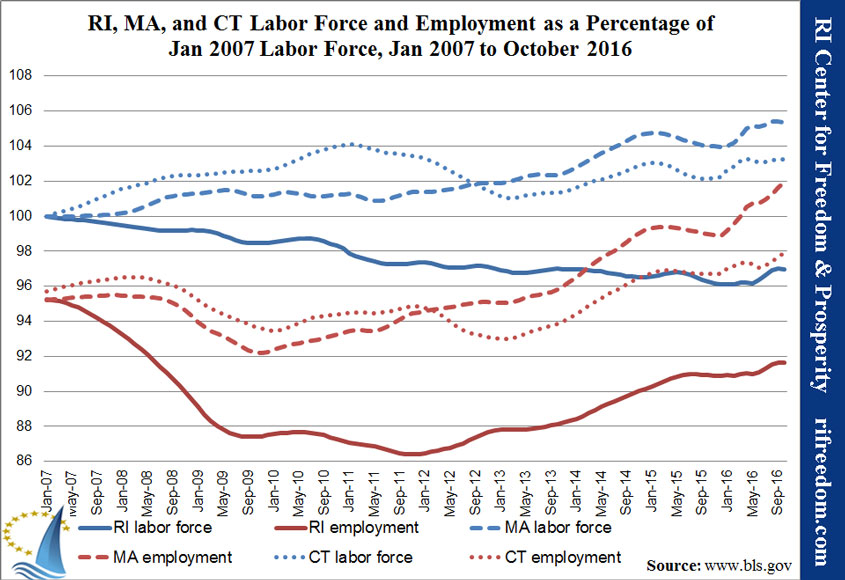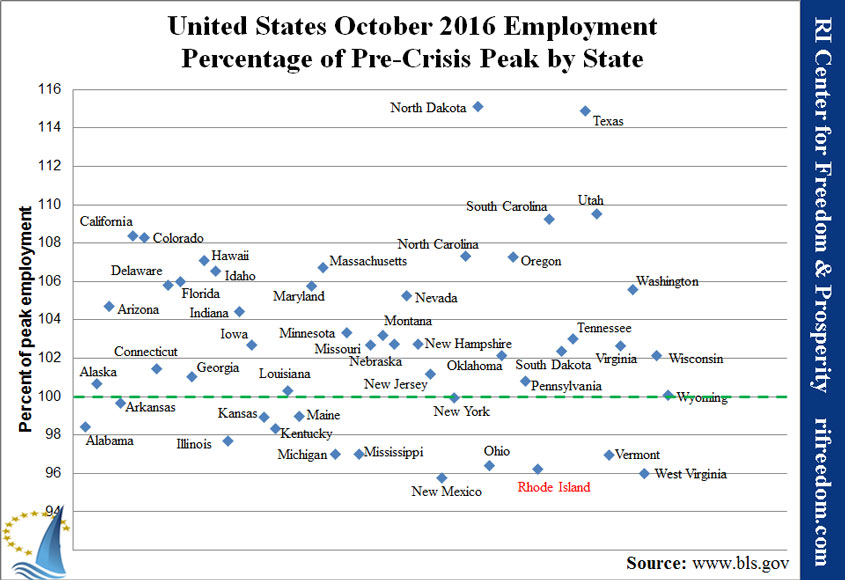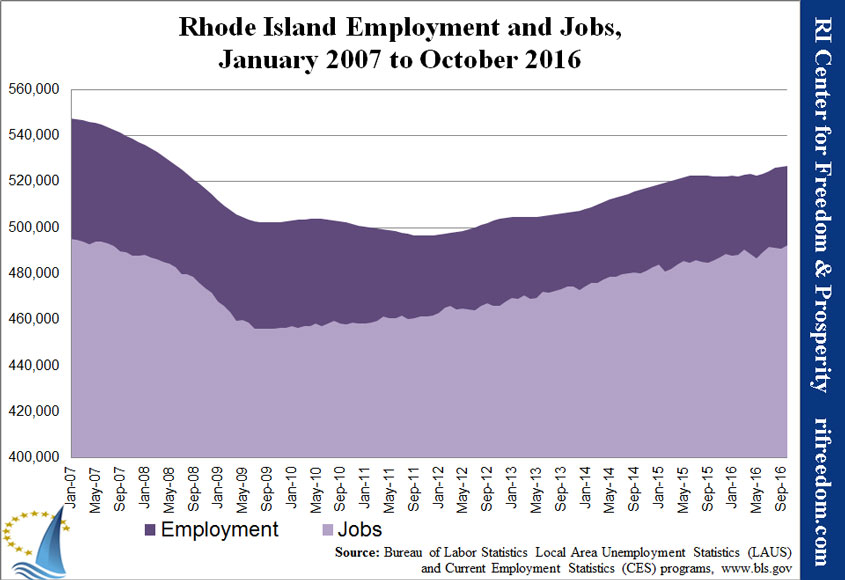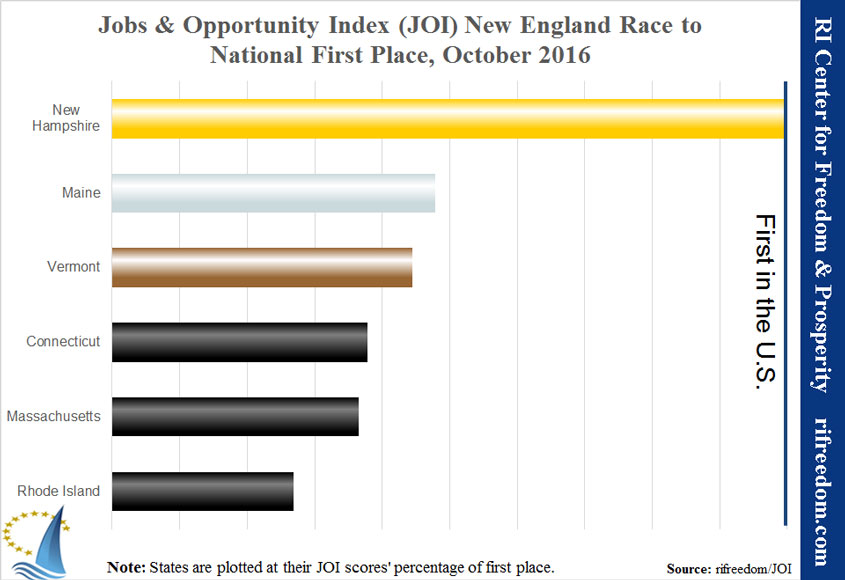October 2016 Employment: Treading Water
Although Rhode Island’s unemployment rate “improved” by one-tenth of a percentage point in October, the underlying trends are a warning sign. Employment edged up by 210 people, but the labor force slipped by 310. It would be better for the Ocean State to have a higher unemployment rate if it meant more people were optimistic enough to enter the labor force, even though not all of them might find jobs immediately.
The first of our monthly charts puts a visual to this trend. The gap between the two lines did shrink, but it’s mostly because the lines moved toward each other, whereas we should want them both to go up. Neither of them, however, is very encouraging, inasmuch as the employment increase as been barely perceptible.
The continuing contrast with Connecticut and, especially, Massachusetts is stark. While the labor forces in the Ocean State’s neighbors aren’t exactly an image of growth, employment is on a big upswing, a trend that is for some reason passing Rhode Islanders by.
As for the national picture, Rhode Island continues to be a passive dot on a chart of every state’s distance from its peak employment. How well Rhode Island appears to be doing is much more dependent on how other states do than any actual change locally. Standing still, Rhode Island remains in the bottom 3, although the states above and below it may change in the near future.
The one reasonably bright point in the monthly employment report from the Bureau of Labor Statistics (BLS) came with jobs based in Rhode Island, captured in the lighter portion of the following chart. As the chart shows, though, this 1,490-job increase hardly changes the trend of little-to-no increase over time.
Broadening the picture beyond employment and jobs with the more-comprehensive Jobs & Opportunity Index (JOI) of the RI Center for Freedom & Prosperity, which takes into account 13 datapoints, shows Rhode Island still at the back of the national and regional races. The damage this month came with relatively modest improvement in long-term and alternative unemployment measures, as well as increases in the number of Rhode Islanders dependent on Medicaid and SNAP (food stamps).


